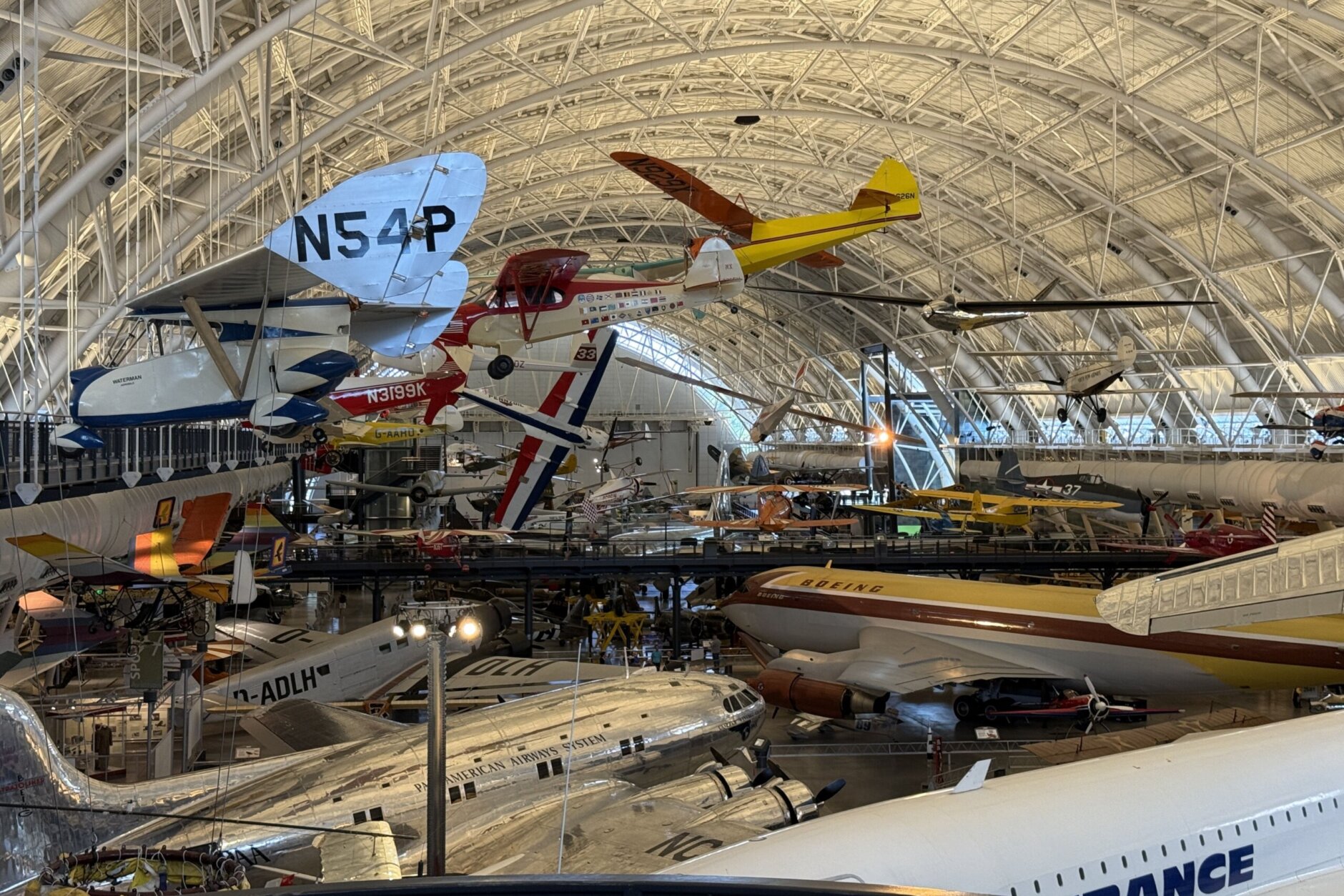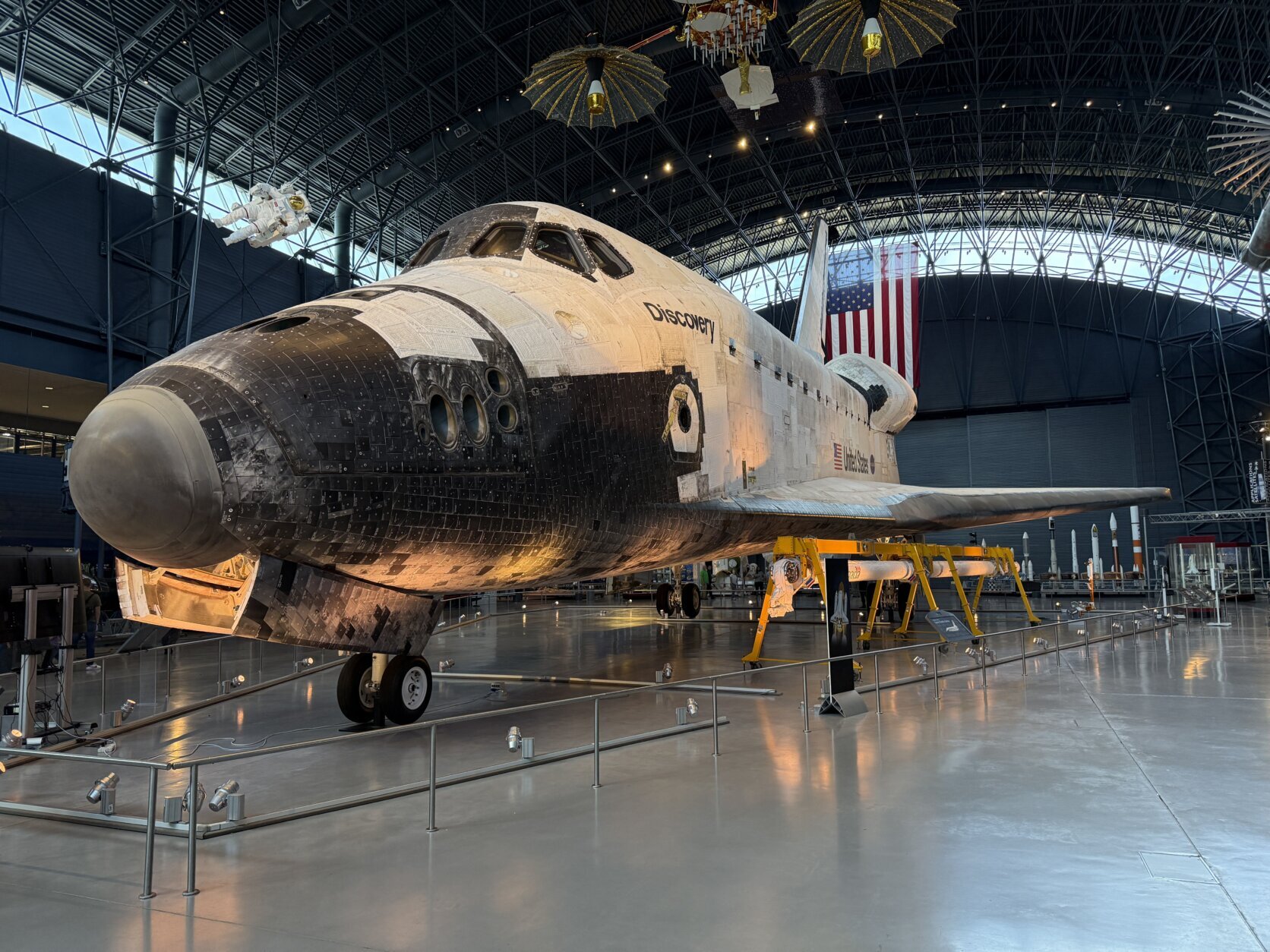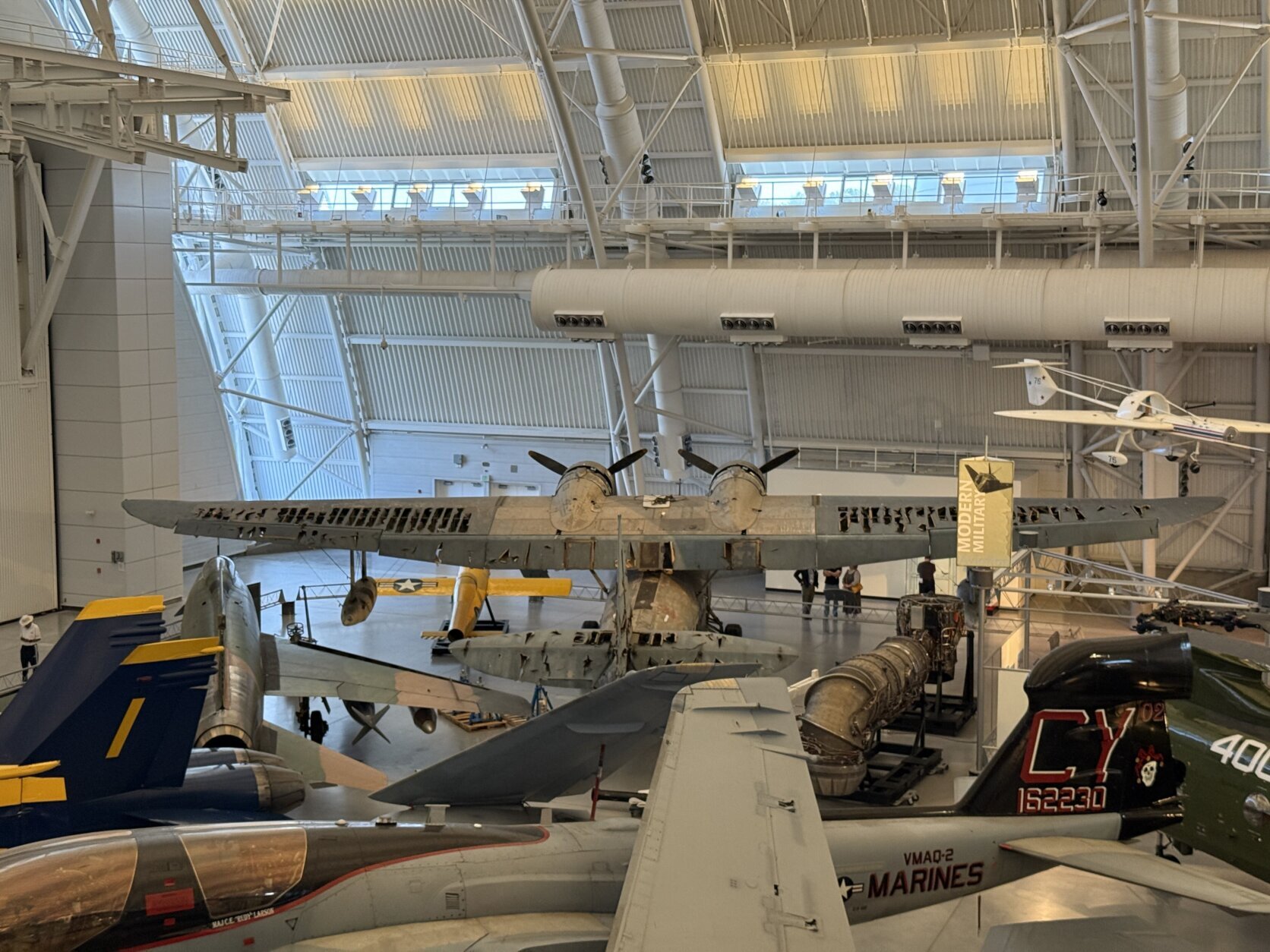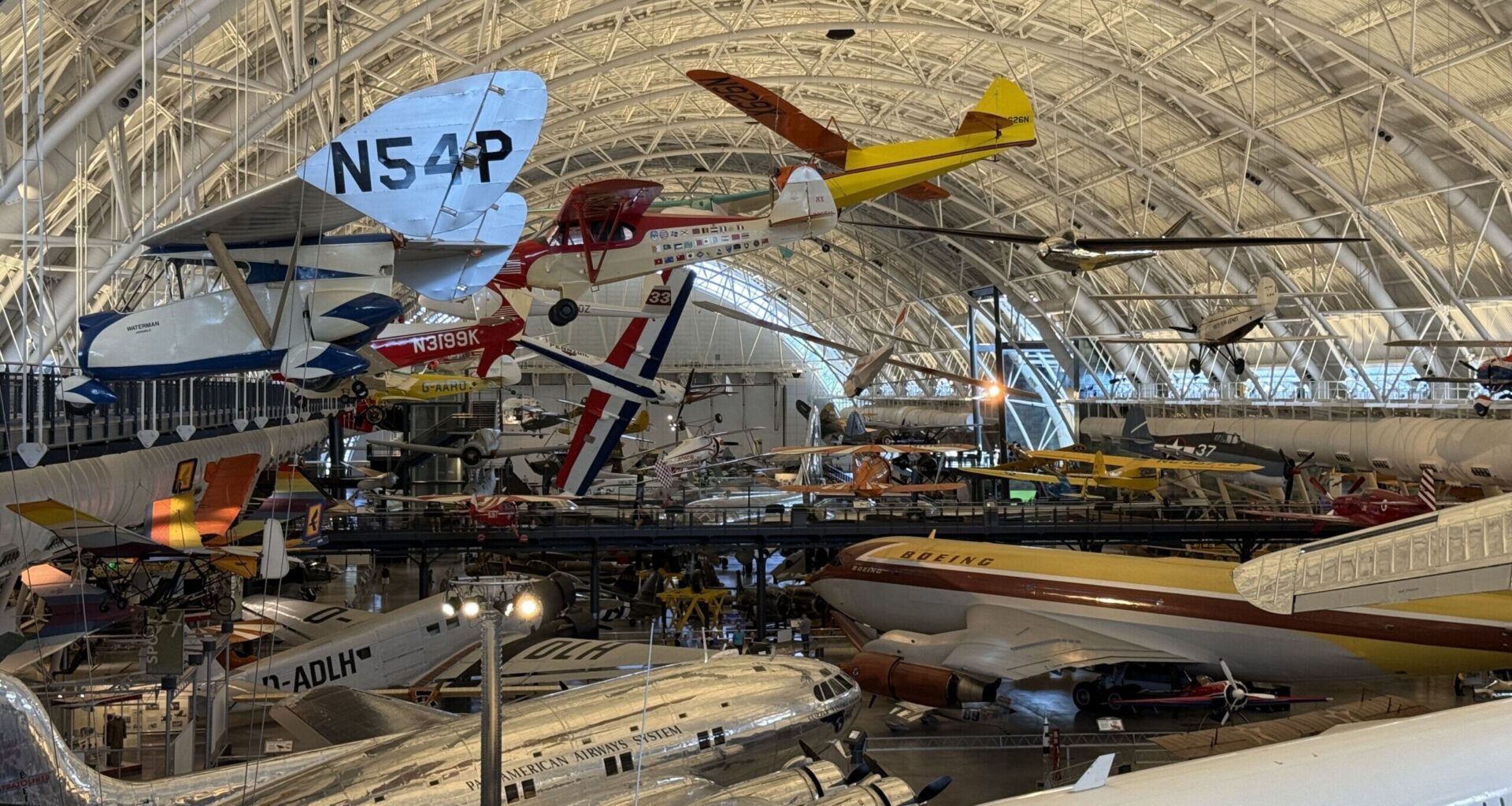The National Air and Space Museum’s Steven F. Udvar-Hazy Center will be expanding by 20% and bringing in dozens of new aircraft.

An inside look of the National Air and Space Museum’s Steven F. Udvar-Hazy Center in Chantilly, Virginia.
(WTOP/Luke Lukert)
WTOP/Luke Lukert

A Space Shuttle orbiter vehicle inside the National Air and Space Museum’s Steven F. Udvar-Hazy Center.
(WTOP/Luke Lukert)
WTOP/Luke Lukert

After the expansion is complete the museum will take the opportunity to restructure the layout of Udvar-Hazy telling a more linear story of aviation with the World War II aircraft in the center.
(WTOP/Luke Lukert)
WTOP/Luke Lukert
This page contains a video which is being blocked by your ad blocker.
In order to view the video you must disable your ad blocker.
Air and Space Museum’s Udvar-Hazy Center is going to welcome more historic planes in a major expansion
When you go into the large museum hangar at the Smithsonian’s National Air and Space Museum’s Steven F. Udvar-Hazy Center, you will be blown away by how many planes are already there, but more will be coming after they expand the museum by 20%, bringing in dozens of new aircraft.
The Enola Gay, the B-29 Superfortress that dropped the first atomic bomb on Hiroshima; the SR-71 Blackbird, one of the world’s fastest planes and the Space Shuttle Discovery, which was flown on 39 orbital missions; are just a few of the 200 aircraft at Udvar-Hazy.
The museum will add 40 to 50 aircraft in the expansion. They will expand the already massive hangar by 44,000 square feet.
Jeremy Kinney, the associate director for Research Collections and Curatorial Affairs at the Smithsonian National Air and Space Museum, said these planes that’ll be brought in have considerable historical significance.
“One exciting addition to the display area is going to be the Martin Marauder B-26, called Flak-Bait. It’s the American airplane that flew the most missions of any other during World War II,” he told WTOP.
Another significant World War II plane addition will be the Boeing B-17 Flying Fortress “Shoo Shoo Shoo Baby,” which flew bombing missions against Nazi Germany before engine trouble forced it to land in Sweden, where it stayed for the rest of the war.
The extension will be added to the north end of the hangar not far from the taxi way that connects the museum to Dulles International Airport.
After the expansion is complete, the museum will take the opportunity to restructure the layout of Udvar-Hazy telling a more linear story of aviation with the World War II aircraft in the center.
“We’re going to really try to really look at the entire hangar and bring new things in, assort them in new ways, so the visitors can get really excited about what they see,” he said.
“You’re going to see new modern-day jets, maybe a stealth fighter,” added Kinney, also mentioning a possibility of an A-10 “Warthog.”
The museum also expects to add air racers to the south end of the hangar.
Kinney said that they do not foresee having to close Udvar-Hazy altogether during the expansion, unlike when the Air and Space Museum on the National Mall was shut down for around six months during 2022, when renovations began. Only half the exhibits were available to the public until more were opened this summer. All renovations are expected to be complete by July 2026.
The Smithsonian will enter their design phase this year for Udvar-Hazy and hope to complete the expansion by 2028.
Get breaking news and daily headlines delivered to your email inbox by signing up here.
© 2025 WTOP. All Rights Reserved. This website is not intended for users located within the European Economic Area.
